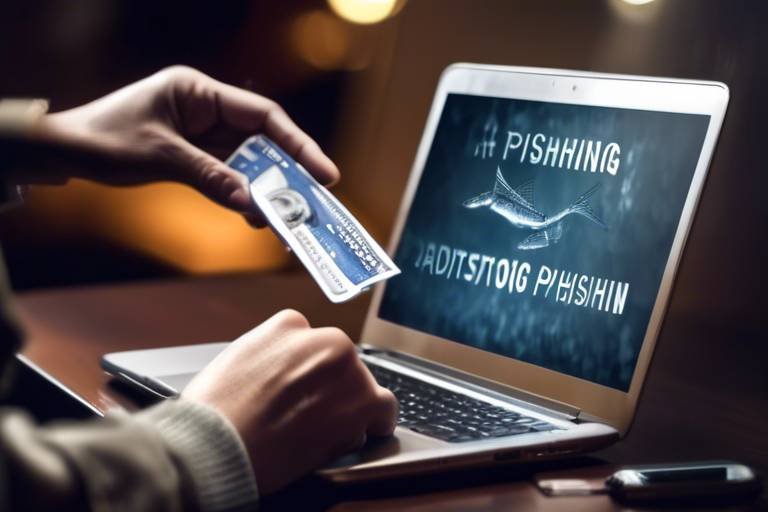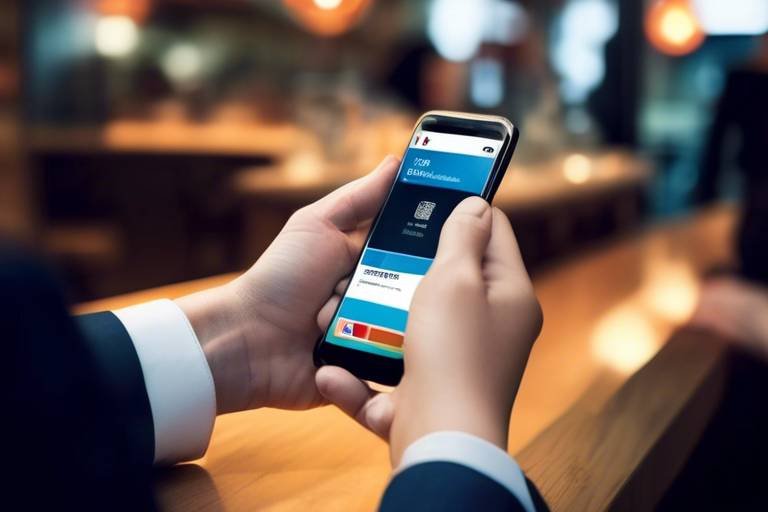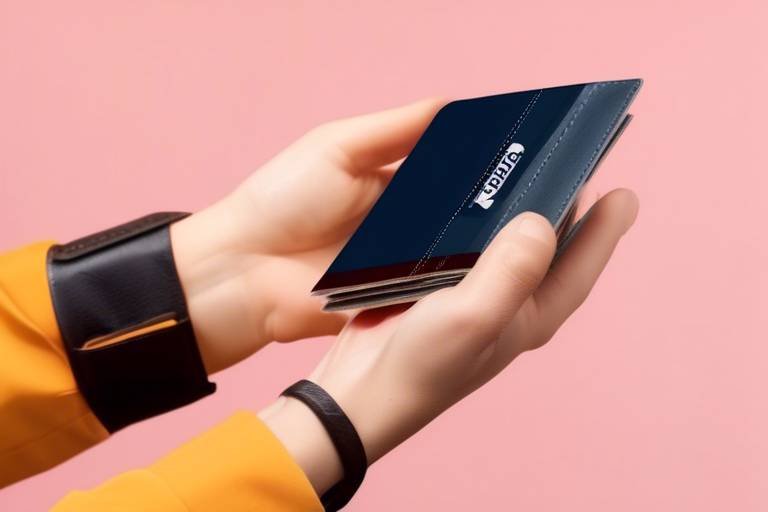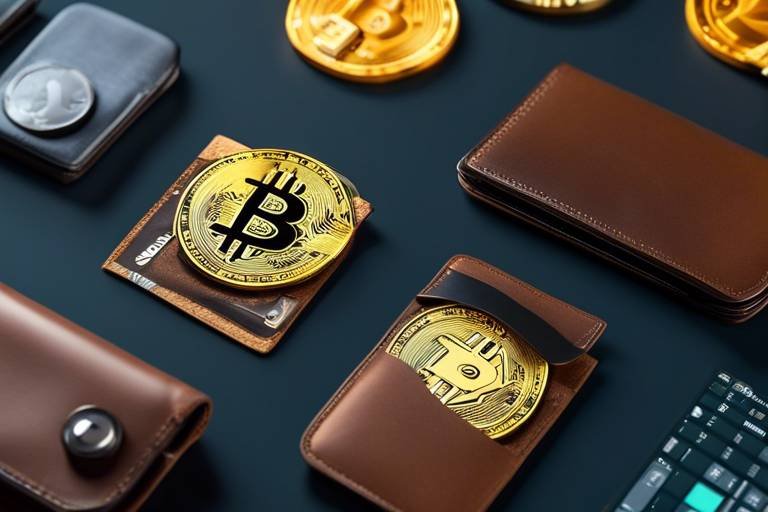The Role of Wallets in Supporting Blockchain Innovations
In the ever-evolving world of blockchain technology, digital wallets play a pivotal role in bridging the gap between users and their digital assets. Think of wallets as the gatekeepers to the vast universe of cryptocurrencies. They not only allow users to store, send, and receive their digital currencies but also empower them to engage with the blockchain ecosystem in a more meaningful way. As blockchain innovations continue to flourish, the importance of robust and user-friendly wallets becomes increasingly evident.
Imagine trying to navigate a bustling city without a reliable map or GPS. That’s what it feels like for newcomers to the blockchain space without a digital wallet. These wallets serve as a user-friendly interface, making it easier for individuals to manage their digital assets. They provide a secure environment for transactions, ensuring that users can confidently engage in buying, selling, and trading cryptocurrencies. With the rise of decentralized applications (dApps) and decentralized finance (DeFi), wallets have evolved from simple storage solutions to essential tools that facilitate complex financial interactions.
Moreover, the functionalities of digital wallets are continuously expanding. Many wallets now offer features such as staking, where users can earn rewards by holding certain cryptocurrencies, and access to DeFi platforms, allowing for lending and borrowing. This evolution not only enhances the user experience but also opens up new avenues for investment and financial growth. As more people recognize the potential of blockchain technology, the demand for versatile and secure wallets will undoubtedly increase.
In summary, digital wallets are more than just storage solutions; they are the foundation upon which blockchain innovations are built. By providing secure access to cryptocurrencies and facilitating user engagement with the blockchain, wallets play a crucial role in shaping the future of digital finance. As we continue to explore the functionalities and types of wallets, it becomes clear that they are integral to the ongoing evolution of the cryptocurrency landscape.
- What is a digital wallet?
A digital wallet is a software application that allows users to store, send, and receive cryptocurrencies securely.
- Are hardware wallets safer than software wallets?
Yes, hardware wallets are generally considered safer because they store private keys offline, making them less vulnerable to online threats.
- Can I use multiple cryptocurrencies in one wallet?
Many digital wallets support multiple cryptocurrencies, allowing users to manage various assets in a single location.
- What is two-factor authentication?
Two-factor authentication (2FA) is a security measure that requires users to provide two forms of identification before accessing their wallets.
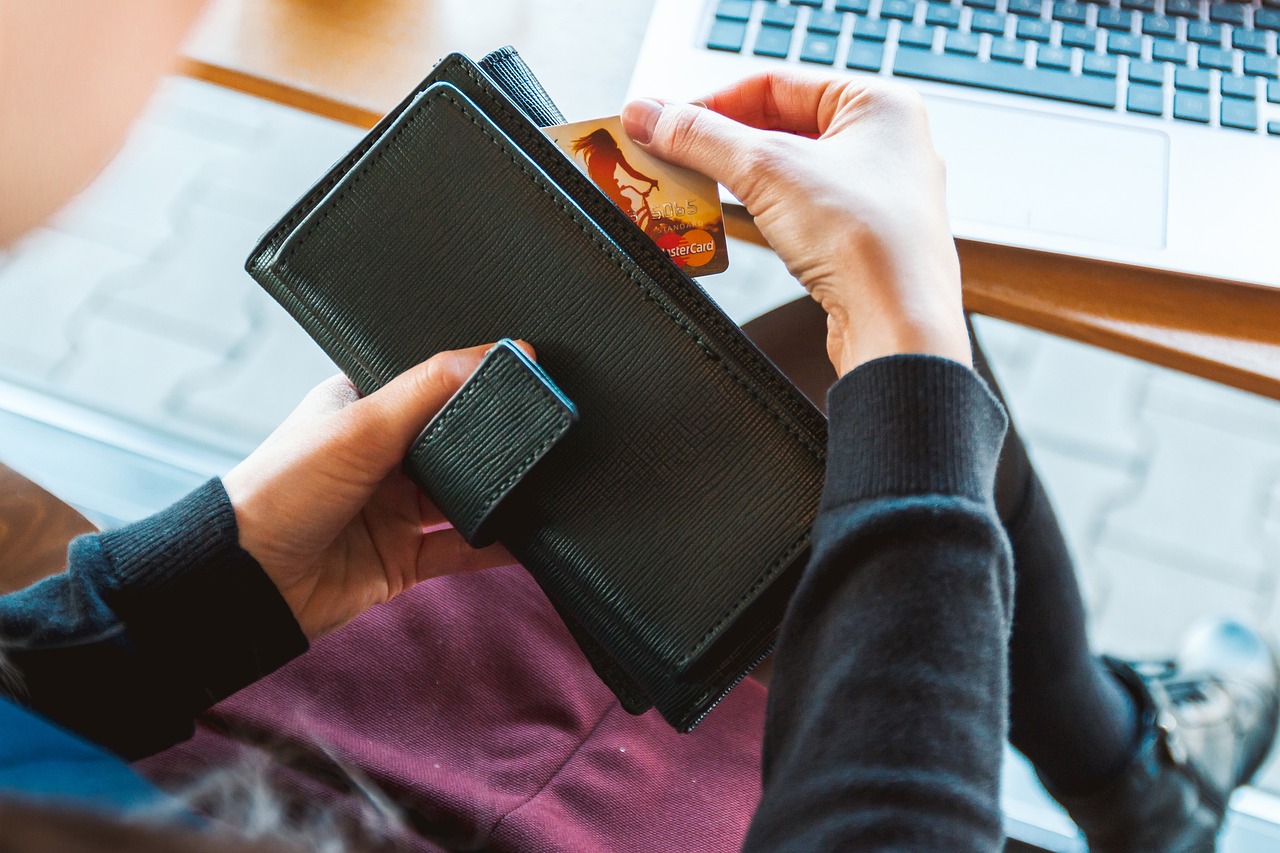
Understanding Digital Wallets
Digital wallets are a fundamental component of the cryptocurrency ecosystem, acting as the essential tools that allow users to manage their digital assets with ease and security. Imagine them as your personal vaults in the vast world of blockchain, where you can safely store, send, and receive cryptocurrencies without the fear of losing your hard-earned investments. These wallets serve as a bridge between you and the blockchain, enabling seamless transactions while ensuring that your private keys—the keys to your digital treasure—are kept safe from prying eyes.
At their core, digital wallets function by interacting with the blockchain, a decentralized ledger that records all transactions. When you send or receive cryptocurrency, your wallet generates a unique address, which is essentially your account number on the blockchain. This address allows you to engage in transactions without revealing your identity, adding a layer of privacy to your financial dealings. However, it’s crucial to understand that while digital wallets can enhance your experience in the crypto world, they also come with their own set of risks.
To better grasp the significance of digital wallets, let’s break down their primary functionalities:
- Storage: Digital wallets securely store your private keys and public addresses. This means you have control over your assets without relying on third parties.
- Transactions: They allow you to send and receive cryptocurrencies quickly and conveniently, often with just a few clicks.
- Balance Tracking: Most wallets provide real-time updates on your cryptocurrency holdings, helping you keep track of your investments.
Furthermore, digital wallets come in various forms, each catering to different user needs. Whether you're a casual user making occasional transactions or a serious investor holding a significant amount of cryptocurrency, there's a wallet type that fits your lifestyle. Understanding these different types is essential for choosing the right wallet for your needs, which we will explore in the next section. In essence, digital wallets not only simplify the management of cryptocurrencies but also empower users to engage with the blockchain technology that is reshaping our financial landscape.
Q: What is a digital wallet?
A: A digital wallet is a software application that allows users to store, send, and receive cryptocurrencies securely.
Q: Are digital wallets safe?
A: While digital wallets provide security features, they are not entirely risk-free. Users should implement best practices, such as using two-factor authentication and keeping software updated, to enhance security.
Q: Can I store multiple cryptocurrencies in one wallet?
A: Yes, many digital wallets support multiple cryptocurrencies, allowing users to manage various assets in one place.
Q: What should I consider when choosing a digital wallet?
A: Consider factors such as security features, ease of use, compatibility with different cryptocurrencies, and customer support when selecting a digital wallet.
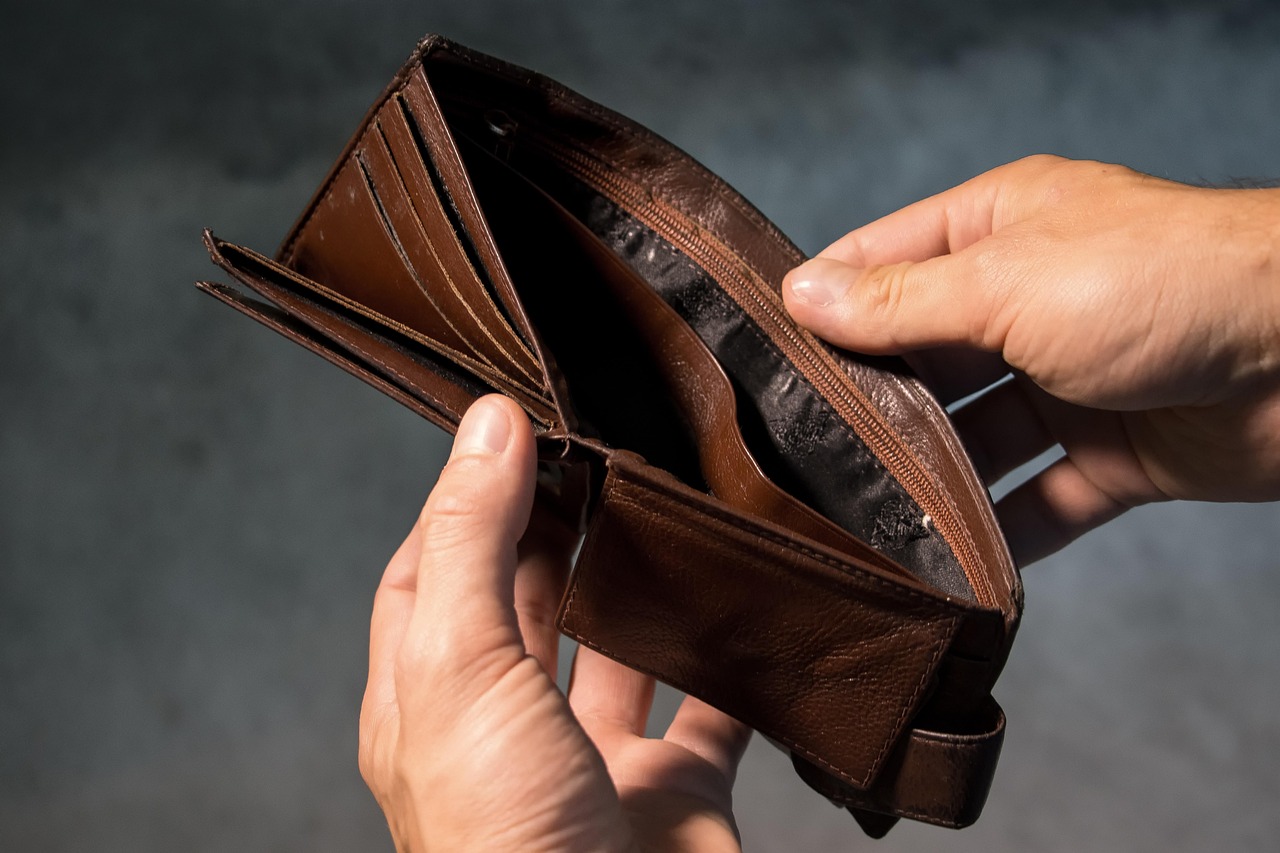
Types of Wallets
When diving into the world of cryptocurrencies, understanding the different is crucial for managing your digital assets effectively. Each wallet type offers unique features, security levels, and user experiences, catering to a wide range of preferences. Whether you're a seasoned trader or a curious newcomer, knowing which wallet suits your needs can make all the difference in your blockchain journey.
In general, we can categorize wallets into three main types: hardware wallets, software wallets, and paper wallets. Each of these has its own set of advantages and disadvantages, which we'll explore further.
Hardware wallets are physical devices designed to securely store your private keys offline. This offline storage significantly reduces the risk of hacking and online threats, making them a popular choice for those looking to hold their cryptocurrencies long-term. Imagine a safe deposit box for your digital coins—this is what hardware wallets represent. They typically connect to your computer or mobile device via USB or Bluetooth, allowing you to manage your assets while keeping your keys secure.
Some of the most trusted hardware wallets include:
- Ledger: Known for its robust security features and user-friendly interface.
- Trezor: Offers a simple setup process and supports a wide range of cryptocurrencies.
Both of these options provide excellent security and usability, making them favorites among crypto enthusiasts.
Setting up a hardware wallet is fairly straightforward. It involves connecting the device to your computer, installing the necessary software, and securely backing up your recovery phrases. This backup is crucial—imagine losing access to your bank account because you forgot your password; the same principle applies here. Proper setup ensures maximum security for your digital assets, allowing you to sleep easy knowing your investments are safe.
On the other hand, software wallets are applications that provide users with easy access to their cryptocurrencies. They can be categorized into three main types:
- Desktop Wallets: Installed on a computer, offering a balance between security and convenience.
- Mobile Wallets: Designed for smartphones, perfect for everyday transactions and quick access.
- Web Wallets: Accessible through web browsers, allowing for easy management from any device with internet access.
While software wallets offer greater convenience, they come with varying levels of security. For instance, mobile wallets are excellent for quick transactions, but they may be more vulnerable to malware and phishing attacks compared to hardware wallets.
Ultimately, the choice between these wallet types comes down to your personal needs and how you plan to interact with the blockchain. If you're looking to hold your assets securely for the long term, a hardware wallet might be your best bet. However, if you need quick access for daily transactions, a software wallet could be more suitable. Remember, the world of cryptocurrencies is ever-evolving, and staying informed about these wallet types is key to navigating this exciting landscape.
Q: What is the safest type of wallet for cryptocurrency?
A: Generally, hardware wallets are considered the safest option due to their offline storage capabilities, which protect against online threats.
Q: Can I use multiple types of wallets?
A: Absolutely! Many users opt for a combination of wallet types—using a hardware wallet for long-term storage and a software wallet for daily transactions.
Q: What should I do if I lose my hardware wallet?
A: If you've backed up your recovery phrase securely, you can restore access to your funds on a new device. Always ensure your recovery phrase is kept in a safe place.
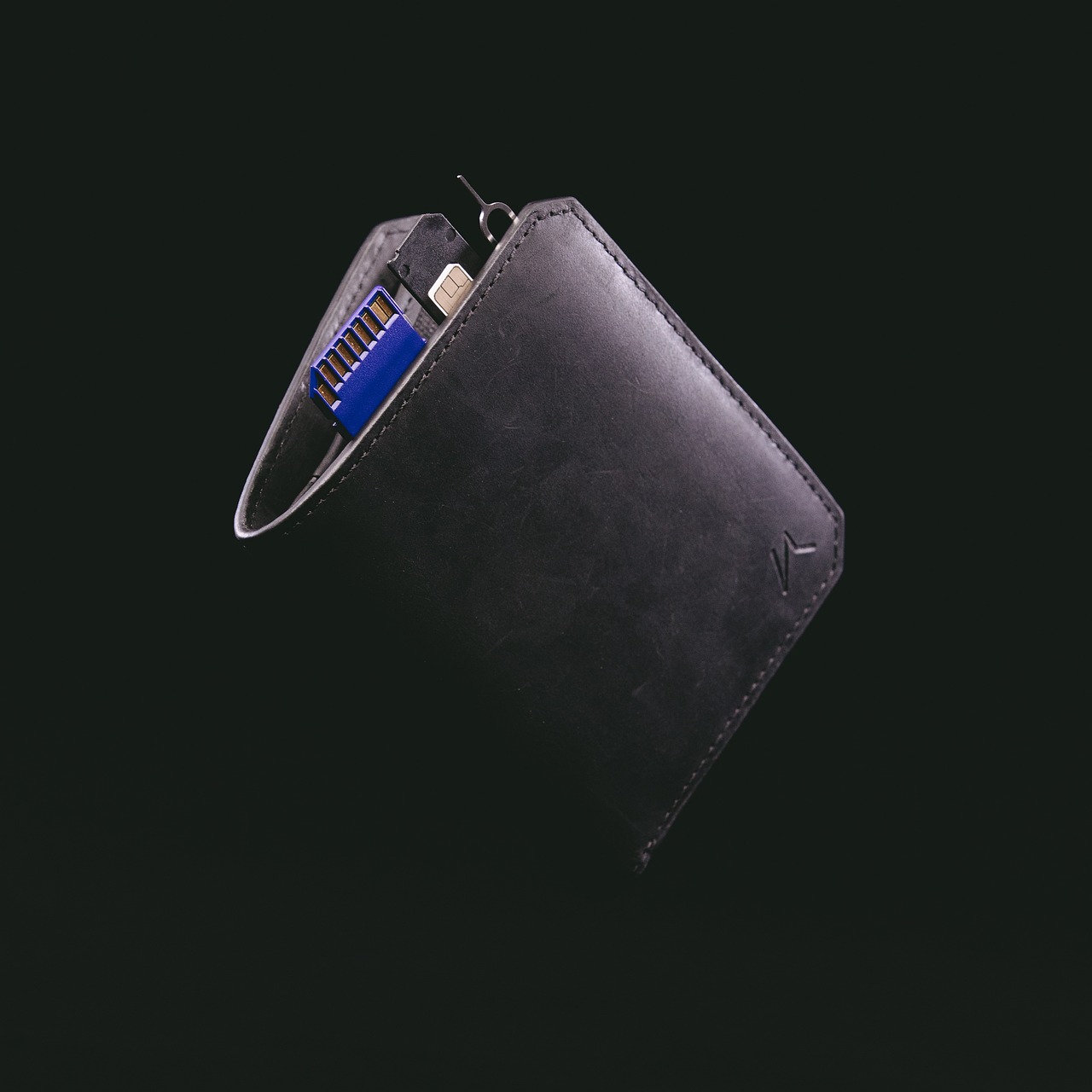
Hardware Wallets
When it comes to securing your digital assets, stand out as one of the most reliable options available. These physical devices are designed to store your private keys offline, effectively shielding them from online threats like hacking and malware. Imagine your cryptocurrency as a treasure chest, and a hardware wallet is the strongbox that keeps it safe, far away from prying eyes and digital thieves. Not only do hardware wallets protect your assets, but they also provide a user-friendly interface for managing your cryptocurrencies.
One of the key advantages of hardware wallets is their robust security features. They are built with advanced encryption technology and often include a secure element to safeguard your private keys. This means that even if your computer is compromised, your cryptocurrencies remain safe within the hardware wallet. Furthermore, many hardware wallets require physical confirmation for transactions, adding another layer of security. This is akin to having a bank vault that requires a key and a fingerprint scan to access, ensuring that only you can unlock your wealth.
Setting up a hardware wallet is a straightforward process, but it requires careful attention to detail. After connecting the device to your computer, you will need to install the accompanying software. This software not only facilitates transactions but also allows you to manage your digital assets effectively. During the setup process, you will be prompted to create a recovery phrase, which is a crucial step for recovering your wallet in case it is lost or damaged. It’s vital to store this recovery phrase securely, as it acts as your lifeline to your cryptocurrencies. Think of it as the secret code needed to access your treasure chest; lose it, and you could lose access to your funds.
In terms of usability, hardware wallets have evolved significantly. Modern devices often come with user-friendly interfaces and compatibility with various operating systems. They can support multiple cryptocurrencies, allowing users to manage their portfolios from a single device. This versatility is particularly appealing for investors looking to diversify their holdings without the hassle of juggling multiple wallets. Some popular hardware wallets, such as Ledger and Trezor, have set the standard in the industry, offering unique features that enhance both security and usability.
In summary, hardware wallets are an essential tool for anyone serious about investing in cryptocurrencies. They provide unparalleled security, ease of use, and support for multiple assets, making them a top choice for both beginners and seasoned investors alike. By investing in a quality hardware wallet, you are not just protecting your investment; you are also empowering yourself to navigate the exciting world of blockchain innovations with confidence.
- What is a hardware wallet?
A hardware wallet is a physical device that securely stores your cryptocurrency private keys offline, protecting them from online threats.
- Are hardware wallets safe?
Yes, hardware wallets are considered one of the safest ways to store cryptocurrencies due to their offline nature and robust security features.
- How do I set up a hardware wallet?
Setting up a hardware wallet involves connecting it to your computer, installing the necessary software, and creating a secure recovery phrase.
- Can I use a hardware wallet for multiple cryptocurrencies?
Absolutely! Many hardware wallets support a wide range of cryptocurrencies, allowing you to manage different assets from one device.

Popular Hardware Wallets
When it comes to securing your cryptocurrencies, choosing the right hardware wallet is crucial. Among the myriad of options available, a few stand out due to their robust security features, user-friendly interfaces, and strong community support. Let's delve into some of the most popular hardware wallets that have gained trust and popularity among crypto enthusiasts.
Ledger Nano S and Ledger Nano X are two of the most widely recognized hardware wallets in the market. The Ledger Nano S is an affordable option that provides excellent security for a wide range of cryptocurrencies. It features a compact design and connects via USB, making it portable and easy to use. On the other hand, the Ledger Nano X offers Bluetooth connectivity, allowing users to manage their assets on the go with mobile devices. Both wallets support over 1,500 cryptocurrencies, making them versatile choices for users with diverse portfolios.
Another strong contender is the Trezor Model One. Known for its simplicity and ease of use, the Trezor Model One supports a variety of cryptocurrencies and is often recommended for beginners. Its open-source software and strong security measures make it a reliable choice for those who prioritize transparency and community feedback. The more advanced Trezor Model T comes with a touchscreen interface, providing an intuitive experience for users while managing their digital assets.
To give you a clearer picture, here’s a quick comparison table of these popular hardware wallets:
| Wallet | Supported Cryptocurrencies | Connectivity | Price Range |
|---|---|---|---|
| Ledger Nano S | Over 1,500 | USB | $59 |
| Ledger Nano X | Over 1,500 | USB, Bluetooth | $149 |
| Trezor Model One | Over 1,000 | USB | $69 |
| Trezor Model T | Over 1,000 | USB | $219 |
In conclusion, selecting the right hardware wallet can significantly enhance your cryptocurrency security. Whether you prefer the affordability of the Ledger Nano S or the advanced features of the Trezor Model T, there’s a wallet that fits your needs perfectly. Always remember to conduct thorough research and choose a wallet that aligns with your security requirements and investment goals.
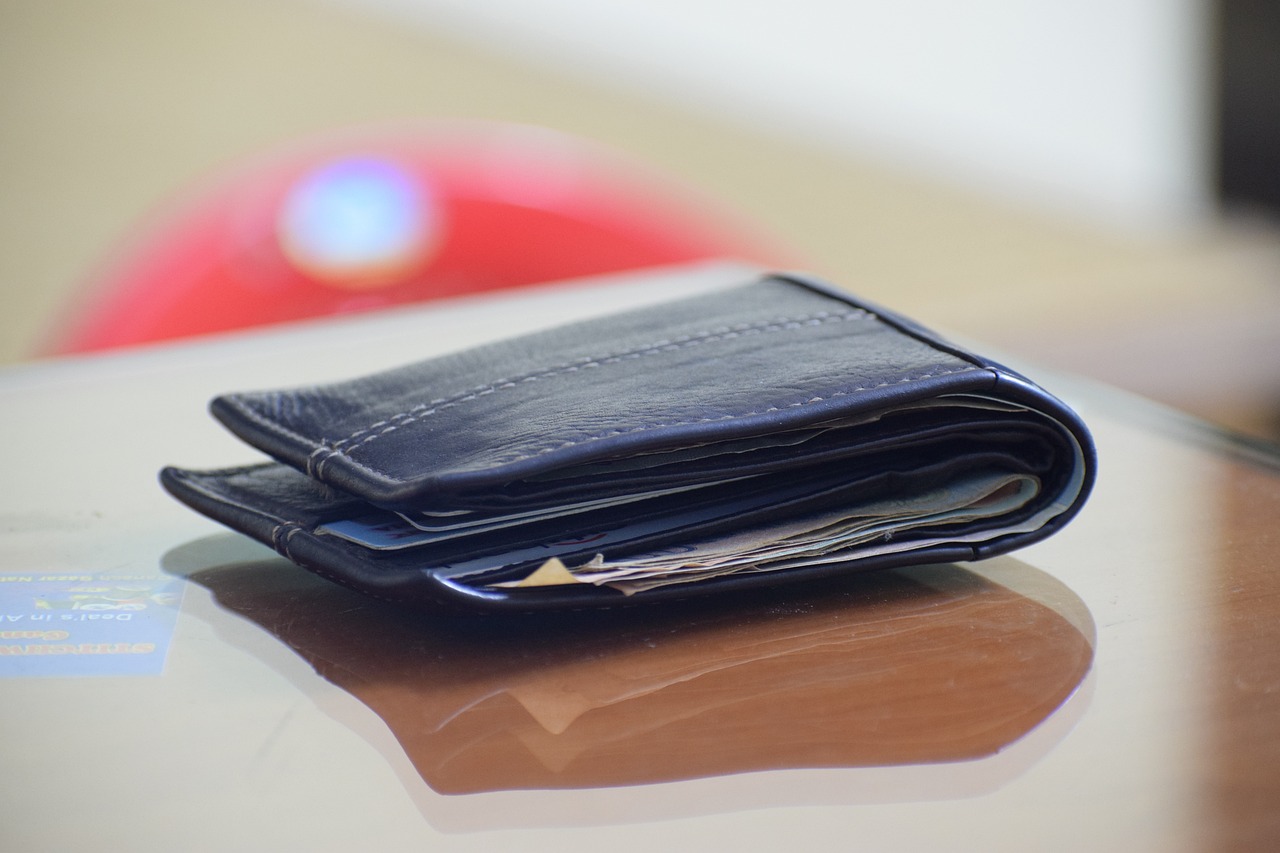
Setting Up a Hardware Wallet
Setting up a hardware wallet might sound daunting at first, but it’s actually a straightforward process that can be accomplished in just a few simple steps. First and foremost, you need to ensure that you have your hardware wallet in hand. Once you’ve got that, the initial step is to connect your wallet to your computer using the provided USB cable. This connection allows your device to communicate with your computer and the necessary software.
Next, you’ll want to install the wallet’s software. Most hardware wallets come with dedicated software that you can download from the official website. This software is crucial because it manages your wallet and allows you to conduct transactions securely. After installation, open the software and follow the prompts to set up your wallet.
One of the most critical parts of this setup process is creating a secure backup. The wallet will generate a recovery phrase, typically consisting of 12 to 24 words. This phrase is your lifeline; if you ever lose access to your wallet, this recovery phrase will allow you to regain control of your assets. Make sure to write it down and store it in a safe place, away from prying eyes. Never share this phrase with anyone, as it grants full access to your wallet.
Once your wallet is set up and backed up, it’s time to transfer some cryptocurrency into it. You can do this by generating a receiving address through the software and using that address to send funds from an exchange or another wallet. This step is vital to ensure that your hardware wallet is functioning correctly and that you can receive and send cryptocurrencies as needed.
In summary, setting up a hardware wallet involves:
- Connecting the wallet to your computer.
- Installing the wallet software.
- Creating a secure backup of your recovery phrase.
- Transferring cryptocurrency into your wallet.
By following these steps, you ensure that your digital assets are stored securely, protecting them from online threats and hacking attempts. Remember, the security of your cryptocurrency largely depends on how well you manage your hardware wallet. So take your time, follow the instructions carefully, and enjoy the peace of mind that comes with knowing your assets are safe!
Q1: What is the main advantage of using a hardware wallet?
A1: The primary advantage of a hardware wallet is its high level of security. By storing private keys offline, it significantly reduces the risk of hacking and unauthorized access compared to software wallets.
Q2: Can I use a hardware wallet for multiple cryptocurrencies?
A2: Yes, most hardware wallets support a wide range of cryptocurrencies, allowing you to manage different assets from a single device.
Q3: What should I do if I lose my hardware wallet?
A3: If you lose your hardware wallet, you can recover your assets using the recovery phrase you created during the setup process. It’s crucial to keep this phrase safe and secure.
Q4: Are hardware wallets completely foolproof?
A4: While hardware wallets offer a high level of security, no device is entirely foolproof. It’s essential to follow best practices, such as keeping your recovery phrase secure and regularly updating your wallet’s firmware.

Software Wallets
Software wallets are the digital equivalent of a traditional wallet, but instead of holding cash and cards, they store your cryptocurrencies. These wallets come in various forms, including desktop applications, mobile apps, and even web-based platforms. The beauty of software wallets lies in their convenience; they allow users to access their digital assets anytime, anywhere, as long as they have an internet connection. Imagine being able to pull out your wallet and make a transaction with just a few taps on your phone – that’s the power of software wallets!
However, with great convenience comes certain risks. Software wallets are generally more susceptible to hacking attempts compared to their hardware counterparts since they are connected to the internet. This is why it’s crucial for users to understand the different types of software wallets available and choose one that aligns with their needs and security preferences.
There are primarily three types of software wallets:
- Desktop Wallets: These are installed directly on your computer and provide a high level of security, as they store your private keys locally. However, they are only accessible from the device on which they are installed.
- Mobile Wallets: Perfect for everyday transactions, mobile wallets allow users to manage their cryptocurrencies on the go. They often come with user-friendly interfaces and features like QR code scanning for quick payments.
- Web Wallets: These wallets are accessible through a web browser, making them incredibly convenient. However, they require a strong internet connection and can be more vulnerable to phishing attacks.
When choosing a software wallet, it’s essential to consider factors such as security features, user interface, and customer support. A wallet with two-factor authentication (2FA), for instance, adds an extra layer of security, making it more difficult for unauthorized users to gain access to your funds. Additionally, a simple and intuitive user interface can make managing your assets a breeze, especially for newcomers to the cryptocurrency space.
In summary, while software wallets offer unparalleled convenience for managing cryptocurrencies, they also come with inherent risks. Users must adopt best practices, such as using strong passwords and enabling two-factor authentication, to safeguard their digital assets. Ultimately, the right software wallet can make your cryptocurrency experience not only secure but also enjoyable.
Q: What is the main advantage of using a software wallet?
A: The main advantage of using a software wallet is convenience. They allow you to access your cryptocurrencies easily from anywhere, making transactions quick and simple.
Q: Are software wallets safe to use?
A: While software wallets are generally safe, they are more vulnerable to hacking than hardware wallets. It's essential to follow best security practices, like enabling two-factor authentication and keeping your software updated.
Q: Can I store multiple cryptocurrencies in a software wallet?
A: Yes, many software wallets support multiple cryptocurrencies, allowing you to manage a diverse portfolio without needing separate wallets for each asset.
Q: How do I choose the right software wallet for me?
A: When choosing a software wallet, consider factors such as security features, user interface, compatibility with your preferred cryptocurrencies, and the level of customer support offered.

Security Measures
In the rapidly evolving world of digital currencies, security is not just a feature; it's a necessity. With the increasing number of cyber threats and hacking attempts, users must take proactive steps to protect their digital assets. One of the most effective ways to enhance security is through the implementation of best practices. These practices not only safeguard your wallet but also provide peace of mind as you navigate through the blockchain landscape.
One of the most crucial security measures is the use of two-factor authentication (2FA). This additional layer of protection requires users to verify their identity using a secondary method, such as a text message or an authentication app. By doing so, even if someone manages to steal your password, they would still be unable to access your wallet without the second verification step. Imagine having a double lock on your front door; it makes it significantly harder for intruders to break in. This is precisely what 2FA does for your digital wallet.
Moreover, keeping your wallet software up to date is vital for maintaining robust security. Regular updates often include patches for vulnerabilities that could be exploited by hackers. Just like how you wouldn’t drive a car without ensuring it has the latest safety features, you shouldn’t use a wallet without the latest security updates. Therefore, make it a habit to check for updates frequently and install them promptly.
To illustrate the importance of these security measures, let’s take a look at the following table that compares wallets with and without 2FA:
| Wallet Type | With 2FA | Without 2FA |
|---|---|---|
| Security Level | High | Low |
| Risk of Unauthorized Access | Minimal | High |
| User Trust | Increased | Decreased |
In addition to these measures, it’s also essential to be aware of phishing attacks. Cybercriminals often use deceptive emails or websites to trick users into revealing their private keys or passwords. Always double-check URLs and never click on suspicious links. Think of it as a treasure map; you wouldn't want to follow a path that leads you to a trap instead of gold. By being vigilant and cautious, you can significantly reduce the risk of falling victim to such scams.
Ultimately, security in the world of digital wallets is a shared responsibility between the user and the wallet provider. While users must implement personal security measures, wallet providers also need to invest in robust security protocols to protect their customers. This partnership creates a safer environment for everyone involved in the blockchain ecosystem.
- What is two-factor authentication (2FA)?
2FA is a security measure that requires users to provide two different forms of identification before accessing their wallets, making unauthorized access much more difficult. - How often should I update my wallet software?
It's best to check for updates regularly, ideally every week, to ensure you have the latest security patches and features. - What should I do if I suspect a phishing attack?
If you suspect a phishing attempt, do not click on any links and report the email or website to your wallet provider immediately.

Two-Factor Authentication
In today's digital age, where cyber threats lurk around every corner, two-factor authentication (2FA) has emerged as a vital shield for protecting your digital assets. Imagine your digital wallet as a treasure chest filled with valuable coins; 2FA acts like a robust lock that requires not just a key, but also a secret code to access it. This extra layer of security ensures that even if someone gets hold of your password, they would still need that second piece of information to break in.
So, how does 2FA work? When you attempt to access your wallet, after entering your password, a secondary verification step kicks in. This could be a text message with a one-time code sent to your mobile phone, or a notification from an authentication app. This means that your wallet is not just relying on something you know (your password), but also something you have (your phone or authentication device). This dual requirement significantly lowers the chances of unauthorized access, making it a critical practice for anyone serious about safeguarding their cryptocurrencies.
Furthermore, implementing 2FA is typically straightforward. Most wallet providers offer easy-to-follow instructions for setting it up. Users are often guided through the process of linking their mobile device or authentication app to their wallet, ensuring that they can receive those crucial codes whenever needed. It's a small step that can make a world of difference in securing your assets.
However, while 2FA enhances security, it’s essential to remember that it’s not infallible. Users should remain vigilant against phishing attacks, where malicious actors may try to trick you into revealing your authentication codes. Always ensure you're accessing your wallet through official channels and be wary of unsolicited messages asking for your credentials.
In summary, two-factor authentication is a powerful tool in the arsenal of digital security. By adding this extra layer of protection, users can sleep a little easier knowing their cryptocurrencies are safeguarded. As we continue to navigate the evolving landscape of blockchain technology, embracing practices like 2FA will be crucial for anyone looking to secure their investments.
- What is two-factor authentication?
Two-factor authentication (2FA) is a security process that requires two different forms of identification to access an account, enhancing protection against unauthorized access.
- How do I set up 2FA for my digital wallet?
To set up 2FA, access your wallet settings, find the security section, and follow the prompts to link your mobile device or authentication app.
- Is 2FA foolproof?
No security measure is completely foolproof, but 2FA significantly reduces the risk of unauthorized access to your wallet.
- What should I do if I lose my phone with 2FA enabled?
Most wallet providers have recovery options. You may need backup codes or recovery phrases to regain access to your account.

Regular Software Updates
In the rapidly evolving world of digital wallets, are not just a good practice; they are a necessity. Think of your wallet software as a living organism. Just like any living being, it needs care and attention to thrive. Updates ensure that your wallet remains robust against emerging threats and vulnerabilities. Each update often includes essential patches that fix security loopholes, implement new features, and enhance overall performance. Ignoring these updates can leave your digital assets exposed to potential attacks, much like leaving your front door unlocked in a high-crime neighborhood.
Moreover, software updates can also introduce improved user interfaces and functionalities. For instance, an update might streamline the process of sending cryptocurrencies or make it easier to track your transaction history. This not only enhances user experience but also encourages more people to engage with blockchain technology. In a landscape where user satisfaction can make or break a platform, staying updated is crucial.
It's also important to understand that not all updates are created equal. Some may seem minor but can have a significant impact on your wallet's security. Therefore, users should prioritize updates from reputable wallet providers. Here’s a quick overview of what to look for in a software update:
| Aspect | Importance |
|---|---|
| Security Patches | Fix vulnerabilities that could be exploited by hackers. |
| New Features | Enhance usability and provide additional functionalities. |
| Performance Improvements | Ensure the wallet runs smoothly and efficiently. |
| User Feedback | Updates based on user suggestions can improve overall experience. |
In conclusion, keeping your wallet software up to date is akin to regularly servicing your car. Neglecting it might lead to unforeseen problems down the road. So, make it a habit to check for updates and install them promptly. Your digital assets deserve the best protection, and staying current is one of the most effective ways to ensure that.
- Why are software updates important for my digital wallet? Software updates are crucial for fixing security vulnerabilities, enhancing features, and improving overall performance.
- How often should I check for updates? It's advisable to check for updates regularly, at least once a month, or enable automatic updates if the wallet supports it.
- What should I do if an update fails to install? If an update fails, try restarting the wallet application or your device. If the problem persists, contact customer support for assistance.

The Impact on User Experience
When it comes to the world of blockchain, the user experience can make or break the deal. Think about it: if you walk into a store and the layout is confusing, the products are hard to find, and the staff is unhelpful, would you want to shop there again? The same principle applies to digital wallets. A wallet that is easy to navigate and visually appealing can significantly enhance a user's experience, while a cluttered and complicated interface can deter potential users from exploring the fascinating world of cryptocurrencies.
One of the most crucial aspects of user experience is the user interface design. A well-designed wallet should be intuitive, allowing users—especially newcomers—to manage their digital assets effortlessly. Imagine trying to learn a new language; if the material is presented in a clear, engaging way, you're more likely to grasp the concepts quickly. Similarly, a wallet with a clean, straightforward design can foster a smoother onboarding experience for users. This simplicity can be achieved through:
- Clear navigation menus
- Visual aids like charts and graphs for tracking assets
- Helpful tooltips and guides for new users
Moreover, the importance of customer support services cannot be overstated. When users encounter issues—whether it's a forgotten password or a transaction that hasn’t gone through—having responsive customer support can be a game-changer. It’s like having a safety net; knowing that help is just a click away can significantly boost user confidence. Wallet providers that prioritize effective customer support often see higher user satisfaction and trust, which can lead to increased adoption rates. For example, a recent survey indicated that 70% of users would recommend a wallet with excellent customer service, compared to only 30% for those with poor support.
Additionally, the overall performance of the wallet plays a vital role in shaping user experience. A wallet that loads quickly, processes transactions efficiently, and integrates seamlessly with various blockchain networks can create a more satisfying experience. Users are more likely to engage with a platform that feels responsive and reliable, much like how a fast, efficient car makes driving more enjoyable. On the flip side, a laggy or glitchy wallet can lead to frustration and potential loss of funds, which is a surefire way to scare users away.
In conclusion, the impact of digital wallets on user experience is profound. By focusing on intuitive design, robust customer support, and high performance, wallet providers can create a welcoming environment that not only attracts new users but also retains them. As the blockchain ecosystem continues to evolve, prioritizing user experience will be essential for the widespread adoption of cryptocurrencies and the overall success of the technology.
1. What is a digital wallet?
A digital wallet is a software application that allows users to store, send, and receive cryptocurrencies securely. It acts as a bridge between users and the blockchain.
2. How can I ensure my digital wallet is secure?
To secure your digital wallet, implement two-factor authentication, regularly update your software, and use hardware wallets for long-term storage of assets.
3. What types of digital wallets are available?
There are various types of digital wallets, including hardware wallets, software wallets (desktop, mobile, web-based), and paper wallets, each catering to different user needs and security levels.
4. How do digital wallets impact investment opportunities?
Digital wallets facilitate investment by providing tools to buy, sell, and manage multiple cryptocurrencies, as well as access to decentralized finance (DeFi) applications.

User Interface Design
The user interface (UI) design of digital wallets plays a pivotal role in shaping the overall experience for users navigating the complex world of cryptocurrencies. Imagine stepping into a high-tech store where everything is neatly organized and easy to find; that’s what a well-designed wallet offers. A clean, intuitive interface can make the daunting task of managing digital assets feel like a breeze, encouraging even the most hesitant individuals to dive into the blockchain ecosystem.
When users first interact with a digital wallet, their initial impressions are largely dictated by the UI design. Elements such as color schemes, navigation menus, and iconography can significantly influence how comfortable a user feels. A wallet that is cluttered or confusing can lead to frustration, potentially discouraging users from engaging further. Conversely, a streamlined interface that highlights essential functions—like sending, receiving, and checking balances—can foster confidence and ease of use. It's akin to a well-organized toolbox where every tool is in its rightful place, ready for action.
Moreover, the inclusion of user-friendly features is critical. For instance, wallets that offer customizable dashboards allow users to prioritize the information that matters most to them. This could include real-time price updates, transaction history, or even news related to their holdings. By enabling users to tailor their experience, wallets can cater to a broader audience, from seasoned investors to curious newcomers.
Another aspect of UI design is the mobile responsiveness. With an increasing number of users accessing their wallets via smartphones, it’s essential that wallet interfaces are optimized for smaller screens. A responsive design ensures that buttons are easily clickable, text is readable, and overall navigation remains smooth, regardless of the device being used. This adaptability can make all the difference, especially when users are on the go and need to perform quick transactions.
Furthermore, incorporating educational resources within the wallet interface can significantly enhance user experience. For instance, tooltips that provide explanations of various features or a dedicated help section can empower users with knowledge, demystifying the complexities of blockchain technology. This educational approach can transform a wallet from just a tool into a comprehensive learning platform, fostering a deeper understanding and greater confidence among users.
In summary, the design of a digital wallet’s user interface is not merely an aesthetic choice; it is a fundamental component that can either enhance or hinder user engagement. By prioritizing intuitive design, mobile responsiveness, and educational resources, wallet providers can create an environment that not only attracts users but also retains them. After all, a positive user experience is the key to unlocking the full potential of blockchain technology and its myriad applications.
- What is a digital wallet? A digital wallet is a tool that allows users to store, send, and receive cryptocurrencies securely.
- How do I choose the right type of wallet? Consider your needs for security, convenience, and the types of cryptocurrencies you plan to manage.
- Are hardware wallets safer than software wallets? Yes, hardware wallets are generally more secure as they store private keys offline, reducing the risk of hacking.
- What should I look for in a wallet's user interface? Look for simplicity, ease of navigation, responsive design, and educational features to enhance your experience.

Customer Support Services
When it comes to digital wallets, the importance of cannot be overstated. Imagine you’re ready to dive into the world of cryptocurrencies, only to find yourself stuck on a technical issue or having trouble accessing your funds. That’s where responsive customer support becomes your lifeline. A wallet provider that offers effective and timely support can make all the difference in your experience. Whether you’re a seasoned investor or a newcomer, having a team of experts ready to assist you can alleviate stress and build trust.
One of the key elements of outstanding customer support is availability. Users often seek assistance outside of traditional business hours, so having 24/7 support can be a game-changer. Additionally, the channels through which support is offered are equally important. Many wallet providers offer multiple avenues for assistance, including:
- Email support
- Live chat
- Phone support
- Comprehensive help centers with FAQs
Another factor to consider is the quality of support. It's not just about being available; the support team should be knowledgeable and capable of resolving issues efficiently. Users appreciate when their questions are answered promptly and accurately, which can enhance their overall satisfaction with the wallet service. Additionally, some providers offer community forums where users can share experiences and solutions, fostering a sense of community and collaboration.
In summary, the role of customer support services in digital wallets is crucial for ensuring a smooth user experience. A wallet that prioritizes responsive and effective support can significantly enhance user trust and satisfaction, making it more likely that individuals will engage with cryptocurrencies and the broader blockchain ecosystem confidently.
To wrap things up, here are some common questions users often have regarding customer support services in digital wallets:
- What should I do if I forget my wallet password? Most wallets have recovery options, often involving recovery phrases or email verification.
- How can I contact customer support? Check your wallet provider's website for contact options, including email, chat, and phone support.
- Is there a fee for customer support? Generally, customer support is free for users, but always check the wallet’s terms and conditions.
- How quickly can I expect a response? Response times can vary, but many providers aim to respond within 24 hours.

Investment Opportunities
Digital wallets play a crucial role in facilitating investment in cryptocurrencies, acting as the essential tools that empower users to navigate the complex world of digital assets. Imagine a digital wallet as your personal vault, where you can securely store your treasures while having the flexibility to trade them at a moment’s notice. With the rise of cryptocurrencies, these wallets have become more than just storage solutions; they are gateways to a plethora of investment opportunities that can significantly enhance your financial portfolio.
One of the standout features of many digital wallets is their ability to support multiple cryptocurrencies. This means you don’t have to limit yourself to a single investment; instead, you can diversify your portfolio with various digital assets. For instance, a wallet that supports Bitcoin, Ethereum, and Litecoin allows you to spread your investments across different currencies, minimizing risk while maximizing potential returns. This diversity is akin to spreading your bets at a casino; it increases your chances of walking away a winner.
Moreover, digital wallets have opened up a whole new world of decentralized finance (DeFi) applications. These platforms enable users to lend, borrow, and earn interest on their digital assets, transforming how we think about investing. Just like traditional banking systems offer savings accounts with interest, DeFi applications allow users to earn passive income through their crypto holdings. This can be particularly appealing for those looking to grow their investments without actively trading. With just a few clicks within your wallet, you can participate in liquidity pools or yield farming, making your assets work harder for you.
| Investment Opportunity | Description |
|---|---|
| Multiple Cryptocurrency Support | Allows users to manage and diversify investments across various digital currencies. |
| DeFi Platforms | Enables lending, borrowing, and earning interest on crypto assets, providing passive income opportunities. |
| Staking | Users can lock up their cryptocurrencies to support network operations and earn rewards. |
| Token Swapping | Instantly exchange one cryptocurrency for another within the wallet, allowing for quick market adjustments. |
In addition to these features, many wallets now offer staking options. Staking is the process of locking up your cryptocurrencies to support the operations of a blockchain network, and in return, you earn rewards. It’s similar to earning interest on a savings account, but with potentially higher returns. This feature not only incentivizes users to hold onto their assets but also contributes to the overall health of the blockchain ecosystem.
Lastly, the ability to swap tokens directly within your wallet adds another layer of convenience. Imagine being able to exchange Bitcoin for Ethereum without needing to navigate through multiple exchanges. This seamless experience not only saves time but also allows for quick responses to market changes, making it easier for investors to capitalize on opportunities as they arise.
In conclusion, digital wallets have revolutionized the way we approach investment in cryptocurrencies. By offering multiple functionalities such as supporting various cryptocurrencies, accessing DeFi applications, staking options, and token swapping, they empower users to take control of their financial futures. As the blockchain ecosystem continues to evolve, the role of digital wallets will only become more significant, making them indispensable tools for both novice and seasoned investors alike.
- What is a digital wallet? A digital wallet is a software application or hardware device that allows users to store, send, and receive cryptocurrencies securely.
- How do I choose the right wallet for my needs? Consider factors such as security features, user interface, supported cryptocurrencies, and whether you prefer a hardware or software wallet.
- Can I use a digital wallet for multiple cryptocurrencies? Yes, many digital wallets support a variety of cryptocurrencies, allowing for easy management and diversification of your investments.
- What is staking, and how does it work? Staking involves locking up your cryptocurrencies to support a blockchain network, earning rewards in return, similar to earning interest in a traditional bank account.
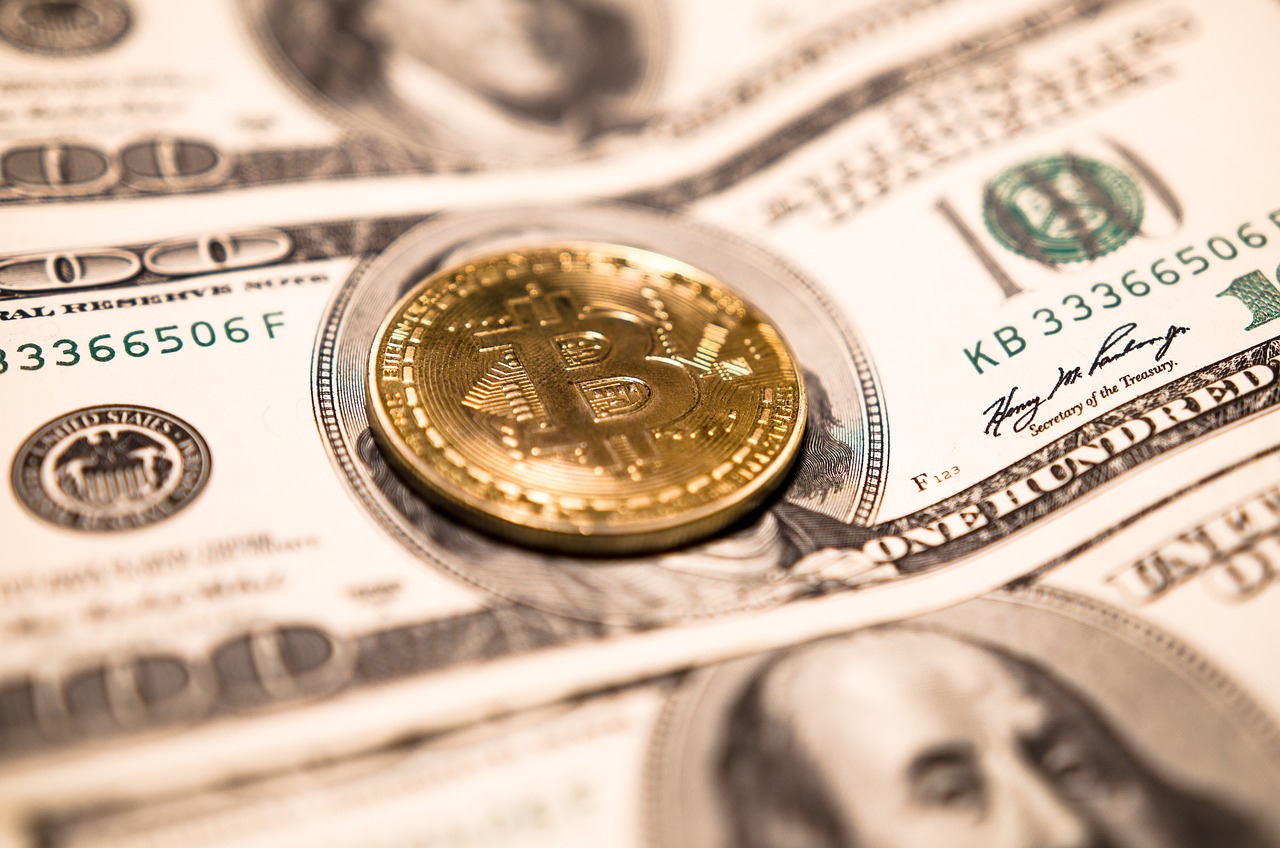
Storing Multiple Cryptocurrencies
One of the standout features of many digital wallets is their ability to store multiple cryptocurrencies. This capability is a game changer for both seasoned investors and newcomers alike. Imagine having a toolbox that not only holds your hammer but also keeps your screwdriver, wrench, and pliers all in one place. That's precisely what multi-currency wallets offer in the world of digital assets. Instead of juggling multiple wallets for each cryptocurrency, users can manage their entire portfolio from a single interface, making it easier to track investments and execute transactions.
When choosing a wallet that supports multiple cryptocurrencies, it's essential to consider a few key factors. First, the wallet should be compatible with a wide range of coins and tokens. Popular options often support well-known currencies like Bitcoin, Ethereum, and Litecoin, but many also accommodate lesser-known altcoins. This flexibility allows users to diversify their investments without the hassle of switching wallets.
Moreover, the user experience plays a critical role in managing multiple assets. A user-friendly interface can significantly enhance the experience of navigating through different cryptocurrencies. For instance, wallets that feature a dashboard displaying real-time market data for each asset can provide valuable insights, helping users make informed decisions. Additionally, wallets that offer seamless transaction processes—such as easy swapping between cryptocurrencies—can greatly enhance usability.
Security is another paramount consideration when storing multiple cryptocurrencies. A wallet that supports various assets should employ robust security measures to protect users from theft and hacking attempts. This includes features like two-factor authentication, multi-signature transactions, and end-to-end encryption. Users must also ensure that they regularly update their wallet software to take advantage of the latest security patches and features.
In conclusion, the ability to store multiple cryptocurrencies in a single wallet simplifies the management of digital assets, allowing users to diversify their portfolios easily and securely. As the crypto space continues to evolve, the importance of versatile wallets will only grow, making them an essential tool for anyone looking to navigate the exciting world of blockchain technology.
- What is a multi-currency wallet? A multi-currency wallet is a digital wallet that allows users to store, send, and receive various cryptocurrencies in one place.
- Are multi-currency wallets safe? Yes, multi-currency wallets can be safe if they employ strong security measures such as two-factor authentication and regular software updates.
- Can I convert cryptocurrencies within a multi-currency wallet? Many multi-currency wallets offer built-in exchange features, allowing users to swap cryptocurrencies easily without needing to transfer them to an exchange.

Accessing DeFi Applications
Decentralized Finance, or DeFi, has taken the financial world by storm, offering innovative solutions that challenge traditional banking systems. Digital wallets play a pivotal role in this revolution, acting as the gateway for users to access a multitude of DeFi applications. Imagine a world where you can lend, borrow, and earn interest on your digital assets without a bank's intervention—this is what DeFi promises, and your digital wallet is the key to unlocking these opportunities.
To access DeFi applications, users need to connect their digital wallets to various platforms. This connection allows them to interact with smart contracts, which are self-executing contracts with the terms directly written into code. The process is relatively straightforward, yet it opens up a myriad of possibilities. For instance, users can participate in liquidity pools, yield farming, or decentralized exchanges (DEXs) right from their wallets. The beauty of this system lies in its transparency and accessibility, making financial services available to anyone with an internet connection.
Here's a quick overview of how users can leverage their wallets to access DeFi applications:
- Connecting Wallets: Most DeFi platforms support popular wallets like MetaMask, Trust Wallet, and others. Users simply need to select their wallet provider and authorize the connection.
- Exploring Opportunities: Once connected, users can browse various DeFi services, from lending platforms like Aave to decentralized exchanges like Uniswap, where they can swap tokens seamlessly.
- Managing Investments: Digital wallets allow users to manage multiple assets and track their investments easily, providing a comprehensive view of their DeFi portfolio.
One of the most exciting aspects of accessing DeFi applications through digital wallets is the potential for passive income. By participating in yield farming or staking, users can earn rewards just by holding their assets in a wallet. This is akin to earning interest on a savings account, but often at much higher rates. However, it's essential to remember that while the rewards can be enticing, the risks are equally significant. Users should always conduct thorough research and understand the protocols they are engaging with.
Moreover, the integration of DeFi applications with digital wallets is continually evolving. As new projects emerge, wallets are increasingly incorporating features that enhance user experience and security. For instance, many wallets now offer built-in DApp browsers, allowing users to explore DeFi applications directly within the wallet interface. This seamless experience not only simplifies access but also fosters greater engagement with the DeFi ecosystem.
In conclusion, accessing DeFi applications through digital wallets is a game-changer in the financial landscape. It democratizes access to financial services, enabling individuals to take control of their assets and explore new investment opportunities. As the DeFi space continues to grow, the role of digital wallets will undoubtedly become even more critical, paving the way for a decentralized future.
What is DeFi?
DeFi, or Decentralized Finance, refers to financial services that operate on blockchain technology without intermediaries like banks. It allows users to lend, borrow, and trade assets directly with one another.
How do digital wallets work with DeFi?
Digital wallets store your cryptocurrencies and allow you to connect to DeFi platforms. They enable you to interact with smart contracts, trade assets, and manage your investments securely.
Are there risks associated with DeFi?
Yes, while DeFi offers exciting opportunities, it comes with risks such as smart contract vulnerabilities, market volatility, and the potential for scams. Always do your research before participating.
Can I access DeFi applications on my mobile wallet?
Absolutely! Many mobile wallets support DeFi applications, allowing you to access these services on the go. Just ensure your wallet is compatible with the DeFi platforms you want to use.
Frequently Asked Questions
- What is a digital wallet?
A digital wallet is a software application that allows users to store, send, and receive cryptocurrencies securely. It acts as a bridge between the user and the blockchain, making it essential for managing digital assets.
- What are the different types of digital wallets?
There are several types of digital wallets, including hardware wallets, software wallets, and paper wallets. Each type offers different levels of security and convenience, catering to various user needs and preferences.
- How do hardware wallets enhance security?
Hardware wallets store private keys offline, providing a high level of security against online threats and hacking attempts. They are ideal for long-term storage of cryptocurrencies.
- Can I use a single wallet for multiple cryptocurrencies?
Yes! Many digital wallets support multiple cryptocurrencies, allowing users to manage and diversify their investments without needing separate wallets for each digital asset.
- What is two-factor authentication (2FA)?
Two-factor authentication is a security measure that requires users to verify their identity through a secondary method, adding an extra layer of protection against unauthorized access to their wallets.
- Why are regular software updates important for wallets?
Regular software updates are crucial as they often include patches for vulnerabilities and new features that enhance both user experience and security, ensuring that your assets remain protected.
- How do digital wallets impact user experience in blockchain?
The design and usability of digital wallets significantly influence user experience. A well-designed wallet can simplify the management of digital assets, encouraging more people to engage with cryptocurrencies and blockchain technologies.
- What role do wallets play in accessing DeFi applications?
Digital wallets serve as gateways to decentralized finance (DeFi) applications, enabling users to lend, borrow, and earn interest on their digital assets, thus expanding their investment opportunities in the blockchain ecosystem.
- How can I ensure the security of my digital wallet?
To ensure the security of your digital wallet, implement best practices such as enabling two-factor authentication, regularly updating your wallet software, and securely backing up your recovery phrases.




